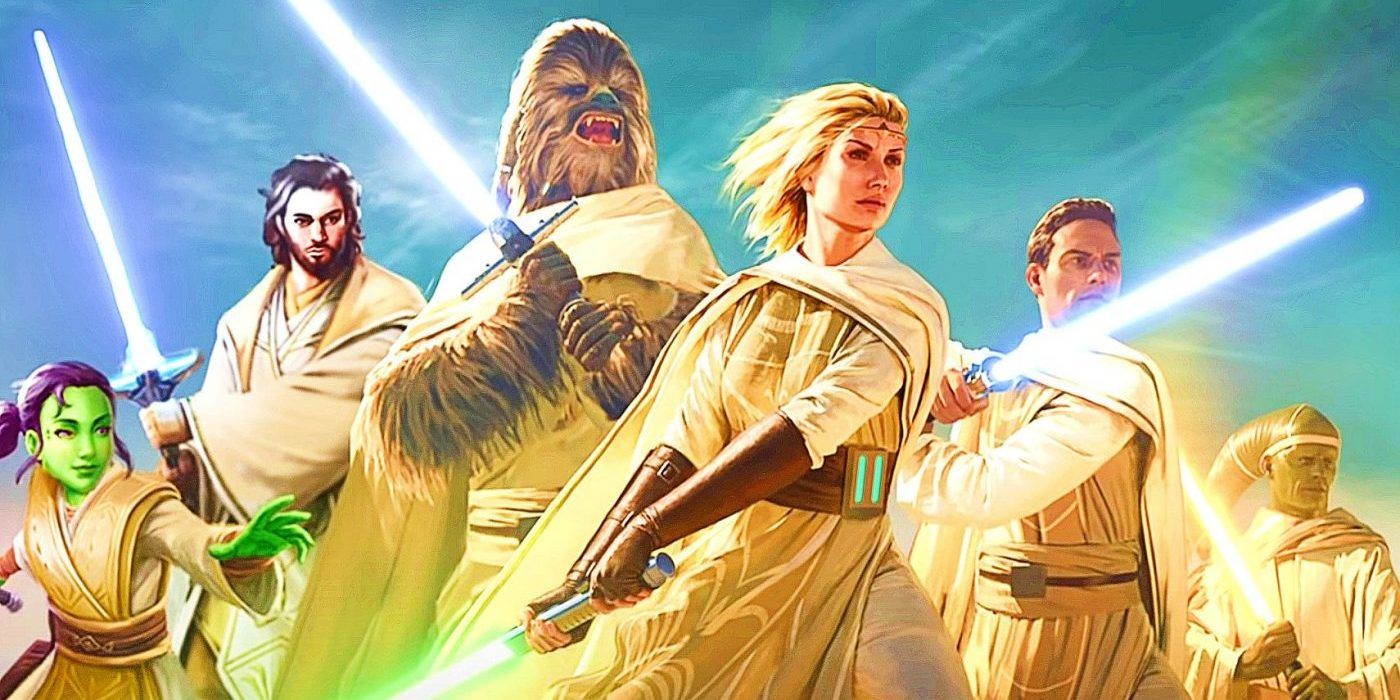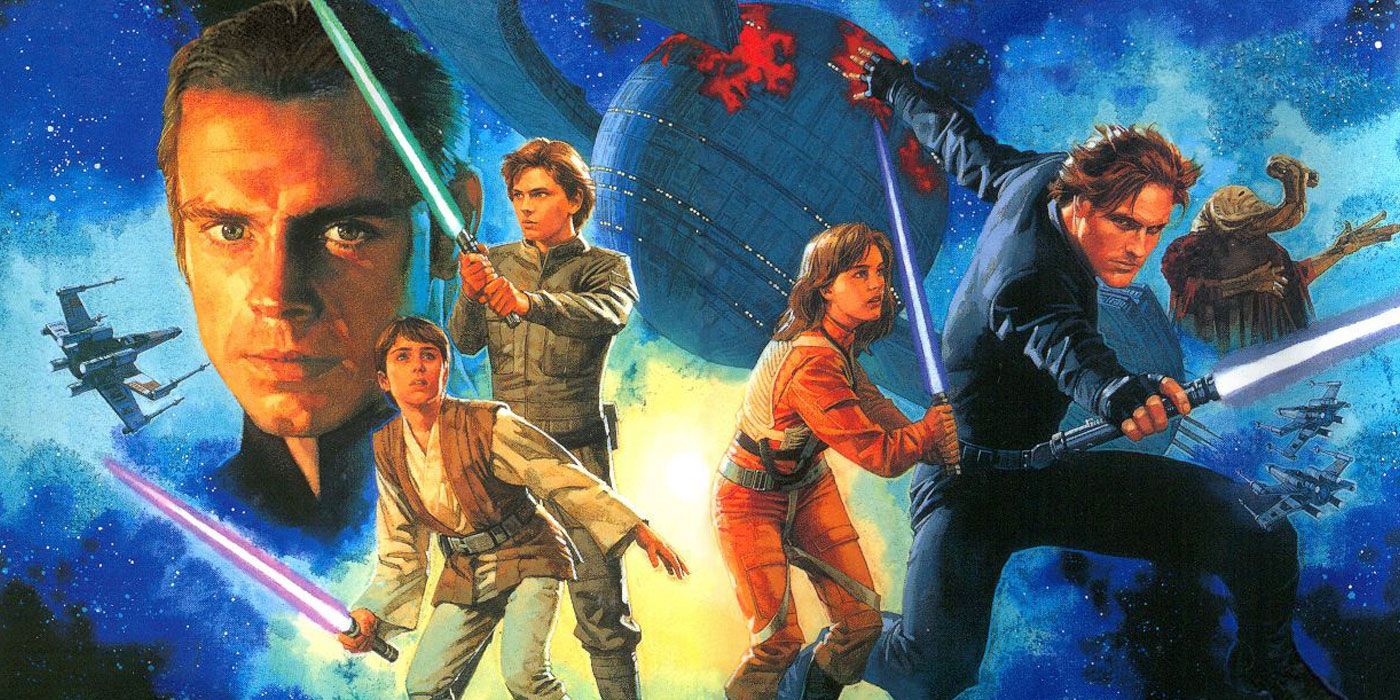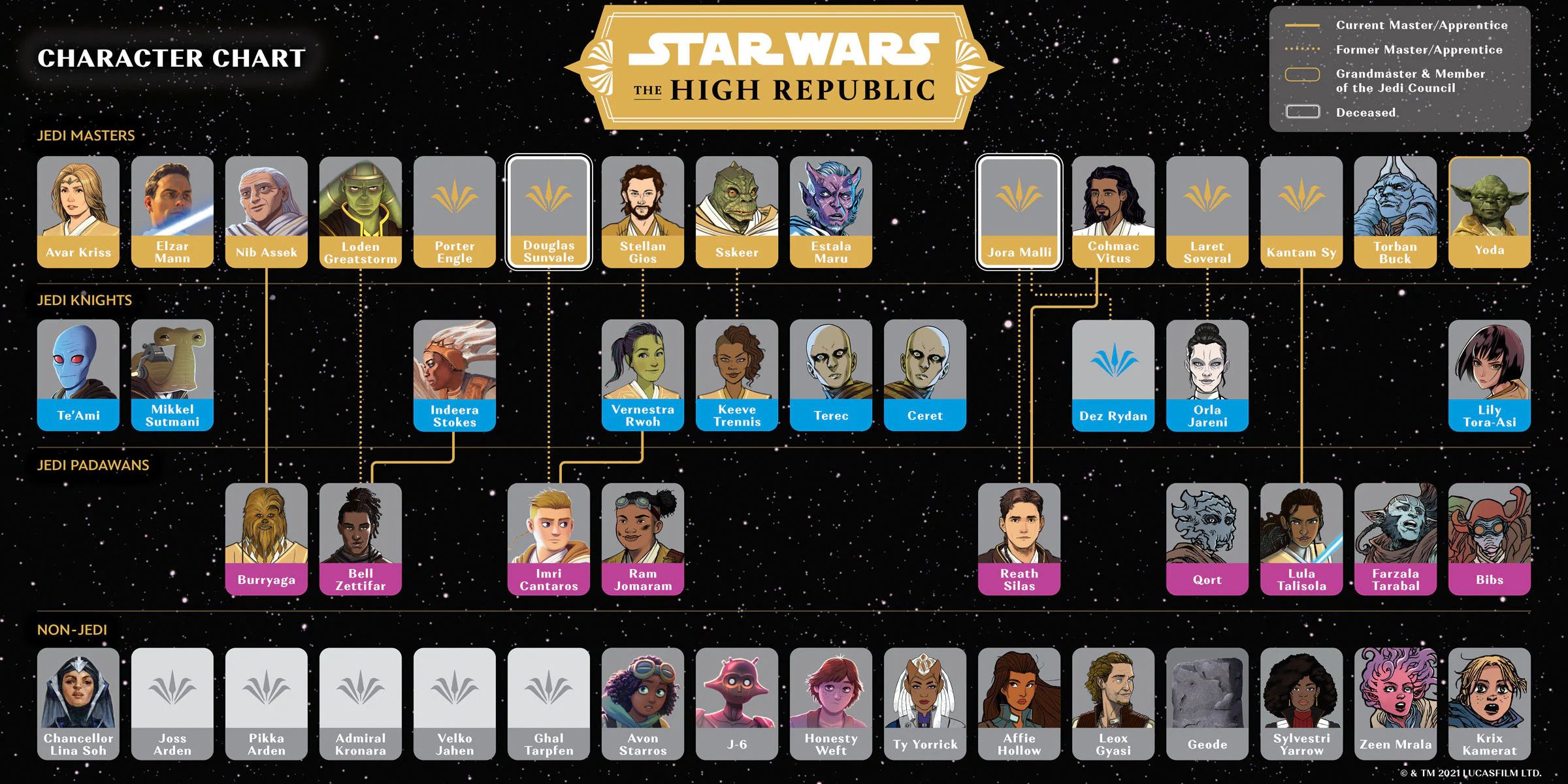In past Star Wars subseries, such as The New Jedi Order, authors included a dramatis personae and timeline at the beginning of each book. On these pages, the authors listed the major characters and side characters to help readers keep track of players in the story, and the timeline helped ground the novel's overall story arc. While Star Wars: The High Republic novels do not include a character list, they released helpful infographics. This new approach improves upon the earlier model by incorporating more information in an easier to update format.
The inclusion of the dramatis personae began with Michael Stackpole's X-Wing: Rogue Squadron. While the primary focus of Stackpole's X-Wing novels was Corran Horn, the squadron and battles contained a large extended cast, making the character list a very useful addition to the text. Aaron Allston used a similar system for his X-Wing novels. When the New Jedi Order subseries began, the first novel did not include a dramatis personae, but after Stackpole's duology, the second and third novels of the series, the inclusion of the dramatis personae became standard for the subseries. The New Jedi Order also made the inclusion of a Star Wars universe timeline standard as well. Overall, in the ever-expanding world of Star Wars, these character lists and timelines helped readers feel more grounded in a galaxy far, far away.
Like the subseries that came before it, the Star Wars: The High Republic novels also incorporate a large cast of characters, most of whom are new to the audience. Like the later Legends novels, a timeline is included in each novel. However, instead of a dramatis personae, the Disney Story Group created a "Star Wars: The High Republic Infographics Gallery" on starwars.com instead. Currently, the gallery only includes two images. The first focuses on the characters and their connections. The second image is a timeline that shows when the novels, short stories, comic books and other media occur and which characters were present at the corresponding key events.
There are many benefits to this approach. First, Lucasfilm can include more information more efficiently in the infographic format. While the Legends' dramatis personaes included gender, species and homeworld, the character infographic for the High Republic era more easily illustrates the characters' relationships. Because the chart currently focuses on the Jedi, the characters are placed into tiers with lines indicating master and apprentice relationships. Also, the infographic has portraits for many of the characters in the story, and more images are being added over time. For the dramatis personaes, incorporating portraits would have been far less feasible due to printing costs, but since these infographics are internet-based, there are not the same concerns.
Furthermore, the infographics are living documents able to be updated as the story progresses and new art is released. Also, while the character chart mainly focuses on the Jedi, the infographic could be updated to flesh out the relationships between other characters later. Because they do not have to worry about printing space, the infographics section could be expanded to include other topics in the future. For example, the team also could create other charts in the future focusing on the ships of the High Republic era that detail each vessel's crew. By making these infographics living documents, the team can more easily adapt and incorporate new approaches to delivering new information as the storyline progresses.
Overall, these infographics show one way that Lucasfilm and the Disney Story Group have adapted new technology when creating stories in the new canon. While dramatis personaes are no longer included in the pages of the new novels, this new system is accessible to potential readers who have not yet bought or read the books. The new system leaves more room for growth and allows for new approaches as the story continues.



